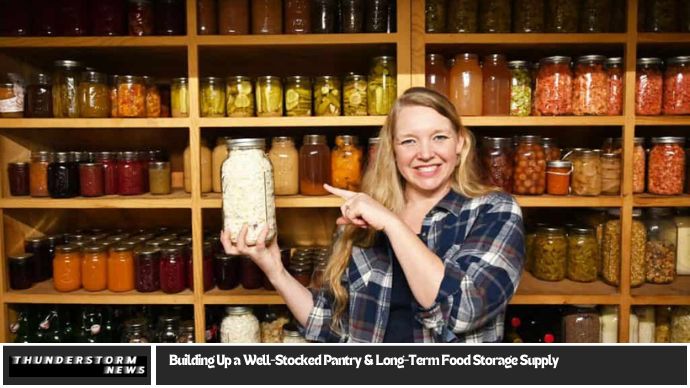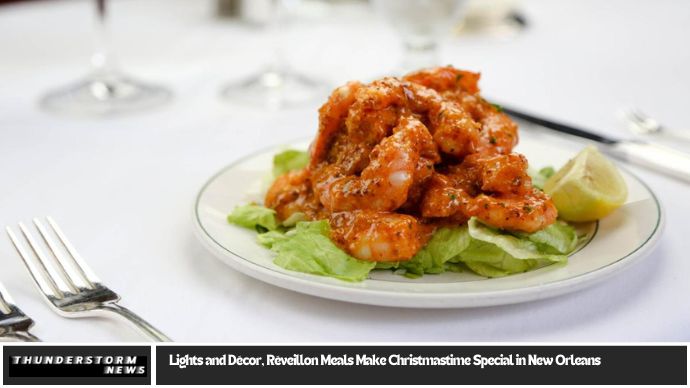A well-stocked pantry and a reliable long-term food storage supply are essential components of any smart household. In today’s unpredictable world, knowing you have food ready for any situation gives peace of mind. Whether it’s for emergencies, saving money on groceries, or simply making life easier, having a well-prepared food supply is a smart move. But where do you start? How do you build the perfect pantry, and what should you keep in long-term storage?
In this guide, we’ll walk you through step-by-step strategies to create a pantry stocked with essentials and an emergency food supply that will keep your family well-fed for weeks, months, or even years. From choosing the right items to understanding storage methods, you’ll learn everything you need to know.
Understand What You Need: Essential Pantry Staples
The first step in building a well-stocked pantry is knowing which items are essential. A well-stocked pantry isn’t about hoarding random items, but about keeping versatile, high-quality ingredients that allow you to cook a variety of meals.
Grains and Legumes
Grains, like rice, quinoa, oats, and pasta, should be staple items in your pantry. These foods have long shelf lives and can be easily incorporated into numerous meals. Legumes like beans, lentils, and chickpeas are also a must, providing protein and fiber to balance your meals.
Canned Goods
Stocking up on canned vegetables, fruits, and proteins (such as tuna or chicken) ensures you have nutritious options on hand when fresh items are unavailable. Choose low-sodium or no-sugar-added varieties when possible to keep your pantry as healthy as it is practical.
Spices and Seasonings
Don’t underestimate the power of spices in creating delicious meals. Having a variety of spices and seasonings on hand can elevate any dish, from soups to stir-fries. Basic spices like salt, pepper, garlic powder, and cinnamon should be your go-to, but consider adding herbs like basil, oregano, and thyme for variety.
Baking Supplies
If you enjoy baking, your pantry should include flour, sugar, baking powder, yeast, and other essential ingredients. These supplies will not only allow you to bake bread and cakes but also help make quick meals like pancakes or muffins.
Building Your Long-Term Food Storage Supply
While your pantry focuses on daily needs, long-term food storage involves stocking up on items that last months or even years. These supplies are especially useful during emergencies, but can also be part of your regular food planning.
Freeze-Dried Foods
Freeze-dried foods are perfect for long-term storage because they retain their nutritional value while lasting up to 25 years if stored properly. Whether you’re storing fruits, vegetables, or full meals, freeze-dried foods are convenient and shelf-stable.
Mylar Bags with Oxygen Absorbers
Mylar bags paired with oxygen absorbers are an excellent way to store grains, rice, pasta, and dehydrated foods. They prevent moisture, light, and air from damaging your food, ensuring it stays edible for years.
Canned Meats and Protein
Long-term protein options like canned meats, including chicken, turkey, and beef, are crucial for a balanced food supply. They provide essential nutrients that can be difficult to find in other preserved foods, making them invaluable during emergencies.
Water and Hydration
It’s easy to overlook water when preparing long-term food storage, but clean water is critical for survival. Make sure to store enough drinking water, along with water purification tablets or filters, so you’re always prepared. Aim for one gallon of water per person, per day, and store at least a two-week supply.
Tips for Organizing Your Pantry & Food Storage
An organized pantry and food storage space are key to keeping everything fresh and easily accessible. A little organization can go a long way in making your kitchen more efficient and your food inventory easier to manage.
Rotate Stock Regularly
A common mistake people make when stocking up on food is letting older items sit in the back of the pantry. Use a first-in, first-out system where you place newer items behind older ones. This ensures that you’re using your oldest supplies first and keeping everything fresh.
Use Clear Containers
For long-term food storage, use clear containers or label everything clearly. This allows you to see exactly what you have on hand, reducing the chances of overbuying or letting food expire without notice.
Keep Like Items Together
Group similar items together, such as canned goods, grains, and dried foods. This makes it easier to spot when you need to restock, and it keeps your pantry organized without wasting time searching for specific ingredients.
How to Safely Store Long-Term Foods
Proper storage is key to ensuring your long-term food supply lasts as long as possible. Factors like temperature, light, and humidity can affect the quality and shelf life of your stored foods.
Cool, Dark, and Dry Conditions
Store your long-term food supply in a cool, dark, and dry space. A pantry, basement, or closet works best, as it keeps temperatures stable and avoids exposure to sunlight that can cause degradation of food.
Proper Sealing Techniques
Always seal containers tightly to prevent moisture and air from entering. Using vacuum-sealed bags or mylar bags with oxygen absorbers can dramatically extend the shelf life of your stored goods.
Avoid Storing in High-Humidity Areas
Humidity can lead to mold growth and spoilage in stored foods. Be sure to keep your pantry and food storage areas dry, using desiccants or moisture-absorbing packets if necessary to absorb any excess moisture.
How to Plan Meals with a Stocked Pantry
Having a well-stocked pantry doesn’t just mean you’re prepared for emergencies—it also makes meal planning much easier. With a variety of staples and long-term storage options, you can quickly plan meals based on what you already have.
Plan Simple Meals
Look at your pantry as your base and plan meals using what you have available. Pasta, rice, canned vegetables, and dried beans can come together for hearty soups, stews, casseroles, or stir-fries. Get creative with seasonings to mix up the flavor.
Batch Cooking & Freezing
Consider preparing large batches of meals and freezing portions for later. Soups, chili, lasagna, and casseroles are all great options that can be made in advance and stored in the freezer for easy, future meals.
Use Leftovers Wisely
With a well-stocked pantry, you can stretch leftovers into new meals. For example, roasted vegetables can be repurposed into a soup, and leftover chicken can be added to pasta or salad. Don’t let anything go to waste!
Conclusion
Building a well-stocked pantry and long-term food storage supply isn’t just about preparing for emergencies—it’s about making your daily life easier, healthier, and more convenient. A well-organized, thoughtful food supply helps you stay prepared for anything life throws your way, while also providing cost-saving benefits and peace of mind.
Start small by focusing on essentials, then gradually build up your supply. By following these simple tips and strategies, you can build a pantry and food storage system that will keep you and your loved ones nourished, no matter what. Happy stocking!
May you also like it:
Southwest Airlines, American Lift Forecasts as Holiday Travel Takes Off
Amazon Reportedly Working on Echo Frames for Delivery Drivers
FAQs
1. How much food should I store for long-term emergencies?
Aim to store at least a two-week supply of food and water for each person in your household. A 30-day supply is ideal for emergencies.
2. What foods are best for long-term storage?
Grains, beans, canned goods, freeze-dried foods, and dehydrated meals are all great options for long-term storage.
3. How do I rotate my pantry stock effectively?
Use the first-in, first-out (FIFO) system where you place newer items behind older ones, ensuring you use up older items first.
4. How can I store large quantities of rice or flour long-term?
Use mylar bags with oxygen absorbers or vacuum-seal bags to keep rice, flour, and other grains safe from moisture and pests.
5. Can I store fruits and vegetables long-term?
Yes! You can freeze, dehydrate, or can fruits and vegetables to store them for long periods. Freeze-dried options last up to 25 years.
6. How do I manage meal planning with a well-stocked pantry?
Focus on simple, easy-to-make meals that use pantry staples, and don’t be afraid to get creative with what you have on hand. Batch cooking is also a great way to save time.







